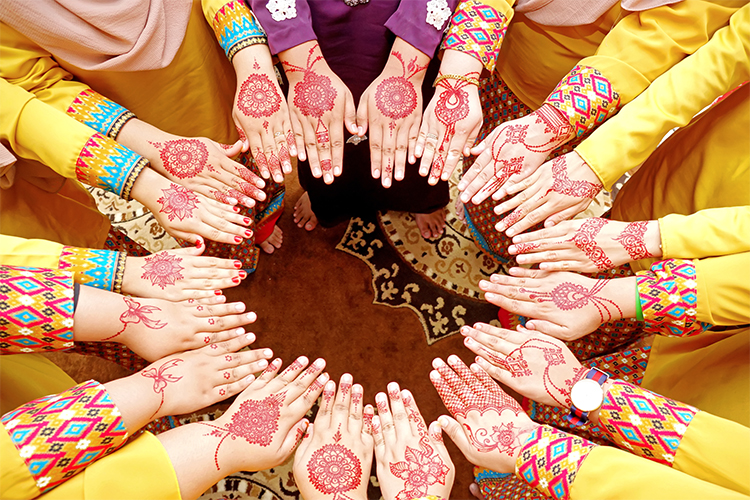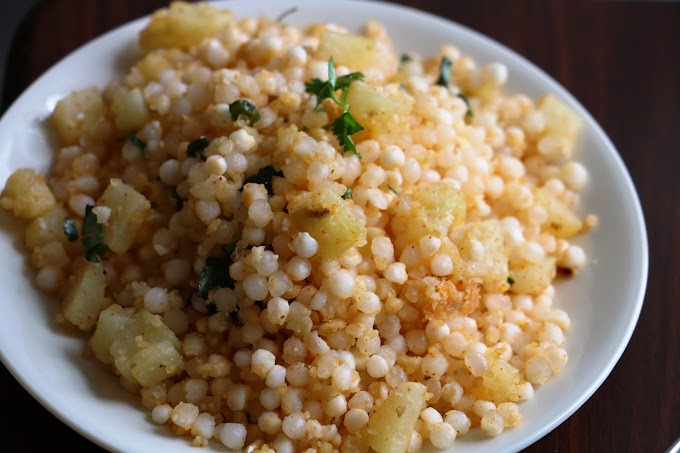Mehndi, or mehandi, mehindi or mendi, are made as temporary henna tattoos in an almost infinite variety of designs: complex and full of intricate details, usually to embellish the hands but can also decorate the rest of the body. Their origin is very ancient and is part of the tradition of many peoples, from North Africa to the Middle East, up to India where it represents an essential moment in the preparation of future brides.
Legend has it, in fact, that the fresher the design, the luckier the wedding will be, which is why the ritual is performed just before the wedding. To make it, henna is used, obtained thanks to the processing of lawsonia inermis, a shrub that, once dried and ground, has coloring properties. Known and appreciated also by the ancient Egyptians, so much so that the mummy of King Ramses II had his hair dyed with this substance, still used today to give hair the typical reddish shade.
Stars such as Madonna, a true pioneer of the genre back in 1998, in the music video for Frozen, Beyoncé, Kendall Jenner, Lady Gaga and Ariana Grande have already been won over by henna tattoos, which have the merit of being exotic, sensual and – a detail of no small importance – temporary.
The patterns each had a strong symbolic charge. In Morocco, for example, rosettes often symbolize life, while the point represents the center, the origin, the home. The circle signifies the absolute and the 'wafk', magic square, symbolizes stability. In Pakistan, it is customary, for weddings, to introduce the letters of the groom's first name into the design. The latter's ability to find them or not will indicate who will wear the pants in the marriage.
In India, where henna is both a Muslim and Hindu tradition, some symbols are still very much alive. Some are religious, others are shared by both communities. Thus, the mango flower is a mark of happiness for both communities. As for the lotus, it is undoubtedly one of the best-known symbols in Asia. Its meanings are multiple. It represents both compassion and purity. In short, nothing to do with the uniformity of today's patterns.
Even though it is increasingly rare to find mango flower patterns on mehndi catalogs, these temporary or fantasy tattoos, as they are called, are not about to disappear because they remain very popular in the summer period, even in Mauritius.
The big trends this year are the 'khaleeji', the mandala and the 'monglai' for those who would like to stay in the Indian and Arabic tradition, and, the mehndi with African patterns and the mehndi mascara for those who would like to be more modern, and all at a good price, starting from Rs 50. So don't wait any longer, ladies, to make yourself even more beautiful and happy while keeping a little mysterious touch as to the choice of your pattern. Because, yes, everything is in the mehndi.

Mehndi - How to Make It?
This is a very complex decoration, which requires firmness in the line and excellent manual skills. It is made with a special henna paste that is usually mixed with botanical extracts such as lavender, which gives it a very pleasant and refreshing scent. The compound is available on the market ready to use, enclosed in special cones with a very thin nozzle.
Once the design is complete, the mehendi should be sprinkled with sugar and lemon, bandaged and left to rest for at least three hours in order to help the color fix. Once perfectly dried, the paste is removed and the skin should be moisturized with coconut or almond oil. After 24/48 hours the orange-red shade will become more intense but the final color depends a lot on the ingredients used to produce the henna paste used. The decoration will then begin to fade after a couple of weeks.
Mehndi - Designs and Ideas to Try and Make it at Home
Before you start decorating your skin, we recommend practicing on another surface and only moving on to the real action when you are confident with your stroke. Remember, in fact, that the pigment, even if spread for a few seconds, could still stain the skin so much that correcting any errors could be impossible.
It is better, therefore, to start with simple motifs and then refine the technique. Although we tend to associate mehndi with complicated designs that recall lace, in reality there are many versions, some decidedly minimalist and easier to execute.
To begin, for example, you can experiment with a motif to reproduce on the palms of your hands, without covering your fingers and wrists. Initially, to obtain a perfectly symmetrical motif, we suggest using special guides or stencils that will allow you to practice while avoiding errors and smudges.
Since this is not a simple drawing but a real art that requires great precision and preparation, if you want a larger motif, with a fine line that covers both arms, the advice is to rely on a person who is expert in this ritual, able to guarantee you an impeccable result.
If, however, you are fascinated by this ancient tradition and want to learn firsthand how to recreate its fascinating arabic designs, the advice is to study the technique in depth with books on the subject and to follow the profiles of experts online. At this point, all you have to do is get the materials to start practicing a lot.
The good thing is that you can find them very easily since the pipettes already filled with pigment can be found effortlessly here too. To better understand the meaning of the many existing designs and the differences between the cultures that use them, all you have to do is let yourself be inspired by the many existing readings on this fascinating topic.








